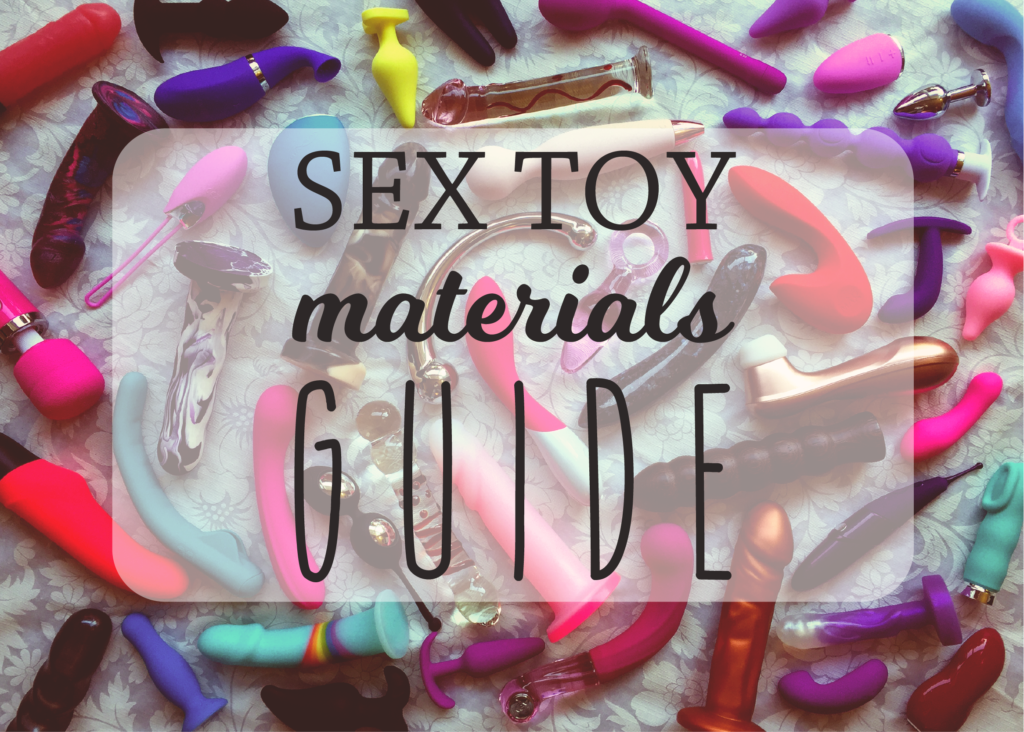
Know What You’re Using: Sex Toy Material Guide
When shopping for sex toys, it’s important that you pay attention to what your toys are made of. After all, these things are going to be on or in the most sensitive parts of your body. Knowing what goes into your toys lets you know how to properly clean them as well as if the toys are body safe.
Why is it so important to worry about toy materials?
The sad truth of it is that sex toys are a largely unregulated industry. As a result, sometimes things are added to sex toys which have no business being there, and which may affect your health as the result of prolonged use.
Phthalates
The chemical that garners the most negative buzz in the sex toy community is something called phthalates (“thal-ates”). Phthalates are a class of chemical plasticizers that are frequently added to plastics used in sex toys to increase their flexibility, making them softer and squishier. According to the EPA, phthalates are “possible human carcinogens” and in other studies they have been linked to neurological and reproductive issues. However, due to the lack of safety regulations in the US sex toy industry there is nothing to force producers to accurately label whether their products contain phthalates or not.
How can I protect myself?
The first thing you can do is check the materials listed by the seller on the online item posting, or checking the product’s packaging. Toys that contain PVC, vinyl, and jelly rubber should be avoided as they often contain phthalates. Even if a product made with these materials is labeled “phthalate free” remember that a lack of regulation can often mean that there is nothing backing up those claims.
Another way to know is by examining the toy outside of its packaging. If the toy is made from PVC, vinyl, or jelly rubber and it is squishy or bends then most likely phthalates have been added to soften the material.
Yet another identifier for phthalate-containing toys is that they will “weep” tiny drops of an oily discharge from their surface as they chemically degrade over time.
Look out for these warning signs, and you should be able to do your shopping worry-free.
Common Sex Toy Materials
Porous Materials
TPR/TPE
These materials some from a mix of soft plastic and rubber. In general, they do not contain phthalates and they are latex free. These are soft and squishy, making them ideal for usage in toys like pocket pussies. Companies such as Fleshlight and Tenga often use TPR/TPE in their products as they give a more lifelike feel to the material.
Rubber
Toys made from rubber are often some of the most affordable ones out there, as it’s cheap to manufacture and very flexible. However, this affordability comes at a price. Rubber toys often contain phthalates, which as detailed above can be harmful to your body. They also often contain latex, and are not suitable for those with latex allergies. In addition, rubber is a porous material and must be cleaned carefully after each use.
As with silicone and TPR/TPE toys, the best lubricant to use is a good quality water-based lube. You can also use silicone with these toys, but you should NEVER use oil or petroleum based lubes as these will cause the toy to deteriorate.
When storing rubber toys, make sure that they are not touching each other. Rubber toys that touch each other can wind up “melting” together as the materials react with each other.
Non-Porous Materials
Silicone
Toys made with medical-grade silicone are some of the safest ones in production. Silicone is a non-porous material that is very unwelcoming for bacteria, making it extremely hygenic. Silicone can be firm or soft, and it easily warms to your body temperature to make for a more comfortable experience. Due to this as well as the fact that they are easy to clean, silicone toys are ideal for penetration. Silicone is also easy to clean since these toys are boilable, being able to withstand temperatures of up to 600 degrees.
The thing to remember when using a silicone toy is DO NOT USE SILICONE LUBE. Silicone lube will cause damage to the material, so with these toys it’s better to stick with water-based lubes.
Glass
Glass toys are extremely versatile. They are often made with tempered glass, making them strong and resistant to temperature shock. If you enjoy temperature play, you can warm or cool them (carefully) beforehand with ease. Glass can withstand a lot of pressure, so no need to worry about it shattering while inserted.
This is a durable material, and as it is non-porous it is extremely easy to clean. It is also compatible with any lube that you choose, no worrying about corrosion. The downside is that if your toy becomes chipped, no matter how slightly, you have to dispose of it to make sure you are being safe.
Stainless Steel/Aluminum
This is another material that is very versatile. Toys made from steel or aluminum often have a sleek and elegant look to them. Like glass, they can be warmed up or cooled down before use for new sensations. These materials are also compatible with all types of lubricants. However, take into account that toys made from metals are often heavier than other materials, so be careful when using them.
The fact that they are non-porous, extremely hygienic and easy to clean make this a very attractive material, and as a result we see more and more sex toys being made from these every year.
Hard Plastic (ABS)
ABS is generally a hard plastic, and contains no phthalates (a softener). As this is a cheaper material, you can often find many toys such as vibrators that are made from ABS at very affordable prices. These toys are compatible with any type of lubricant, and very durable.
The downside is that hard plastic toys can often be on the louder side, and when cleaning you cannot bring these toys to a high temperature (as you can with silicone, glass, and steel/aluminum) without damaging the material so they must be cleaned with care.



Leave a Comment